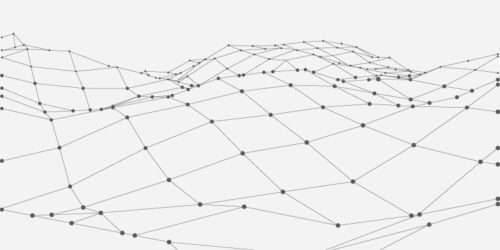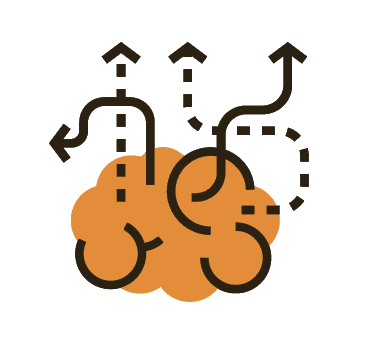
Writing is Designing: Three Principles for Writing Effective UX Copy
Design MarketingImagine, if you will, that you’ve discovered a cute new gem of a bakery. The pastry chef welcomes you into the ambient, delightfully quirky...
So you want to build a digital product. There’s more than one way to approach it, but most options will generally fall into two categories. You can take a technology-focused approach, which means focusing on which languages or platforms will get the application running. Once that’s accounted for, you start thinking about the design. Or, you can employ Design Thinking, where you begin by considering the human being who will be using the app. You might ask questions like:
From there, you begin to ideate on the best way to structure a helpful experience for them through technology. (For a more detailed exploration of the phases of Design Thinking, click here.)
Of course, when laid out in this order, Design Thinking seems like the obvious choice. Certainly, it’s the one we recommend – and always use to develop digital products. But when faced with intense time-to-market constraints, the technology-focused approach often wins out. After all, an unfinished product with a thoughtful development process does nothing to advance your company’s bottom line.
Yes, your app needs to function before anything else can happen. But what if you don’t have to choose between a carefully designed user experience and hitting aggressive business targets?
Upon further examination, Design Thinking offers you the fastest route to a successful digital product – one that can help you meet your business goals through, rather than at the expense of, superior useability and creativity. We would even go so far as to argue that you simply can’t build a successful digital product without Design Thinking.
Let’s examine why:
In today’s competitive environment, user experience IS the product.
The fact of the matter is, the market for digital products is a crowded one. Gone are the days that users will settle for an okay experience when they could be having a great one. And the constant introduction of new technologies compounds the pressure: 73% of customers reported that one extraordinary experience with a company raises their expectations for others, according to Salesforce.
Beyond individual budgets, a bad experience with a digital product can do even greater intangible damage to your brand. Sixty-seven percent of customers believe that the way a company uses technology is a reflection of how it operates in general. Even seemingly small features updates can undo the hard-won confidence users have in your company’s ability to deliver value.
In this competitive atmosphere, the user experience is the product.
The best way to create a good one? Empathize – which just happens to be the first stage of Design Thinking. Often, teams actually interview users to gain these insights. By understanding the user’s specific situation and challenges, you can engineer an experience that’s truly beneficial and easy for them – so they don’t immediately abandon your tool and create an alternative solution.
You can keep technical and design debt to a minimum.
Typically, two types of pressures force development teams away from a user-first mindset and into two versions of debt, both of which deprive an organization of its return. First, the race to release an application often drives technical debt. Technical debt accrues when a programmer opts for a faster solution over building out a more involved one that is less likely to incur bugs down the line.
Technical debt describes the weight of all these shortcuts as they transform into complicated, expensive messes that take extended time (and budget) to fix. A 2018 report from the Consortium for IT Software Quality indicates that software developers spend 42% of their time fixing bugs, with the task constituting 80% of IT budgets. If you’re in a regulated industry, a web of buggy code can have even larger consequences in the form of HIPAA and PCI violations – which can cost up to $1.5 million apiece.
Once an app has been released, there’s also the pressure to introduce new features. But when programmers don’t take the time to consider how a new feature might function in relationship to existing ones, they take on design debt. As a result, the feature comes out on schedule (and it looks fantastic) but people can’t easily take advantage of it – or worse, it interrupts the user flow entirely. The time saved on the front end ultimately creates added effort, expense, and brand damage later.
Design thinking helps development teams avoid both of these pressures from the start. First, by putting the user’s needs into context, development teams can balance the must-haves from an experience perspective with the business goals of a particular project. Most importantly, as solutions pass through the prototype and development stages, teams have a low-stakes way to quickly determine whether the product or new feature will thrive out in the world (and where bugs threaten success). From there, they can put their focus on exactly what needs adjustment and what’s not serving the user before creating a full-scale version of the product or update.
You have a set process with flexibility – that yields the strongest solution.
Leaving room to imagine multiple solutions to a problem doesn’t mean you have to abandon all sense of efficiency. Design Thinking, like any other structured approach, introduces a set process with clearly defined phases. Yes, there’s ample room for ideation, but a faithful approach progresses steadily to prototyping, development, and testing – saving you ample time in the long run with a product that performs well at the start.
And thanks to the inherent flexibility of ideation and prototyping, your team still considers multiple solutions and configurations, ensuring your final product has maximum creativity and functionality from day one.
In conclusion, technical functionality without useability is ultimately a wasted expense.
Or, to put it more plainly: just because it turns on, doesn’t mean it’s working. Design Thinking is the ideal method for staying on schedule with a digital product that can meet real-world needs under real-time pressures and constraints.
At the Ranch, we’re always looking for new ways to make Design Thinking enhance digital product development. If you’re ready to give Design Thinking a test drive, or apply it to a great new idea, we’re here for support, guidance – or just a friendly chat. Want more information? Check out what our digital product agency can do for you.

Imagine, if you will, that you’ve discovered a cute new gem of a bakery. The pastry chef welcomes you into the ambient, delightfully quirky...

There are several design patterns used these days in the .NET ecosystem. What are they? What are the benefits and drawbacks of each pattern?...

Large organizations with multiple software development departments may find themselves supporting multiple web frameworks across the organization. This can make it challenging to keep...
